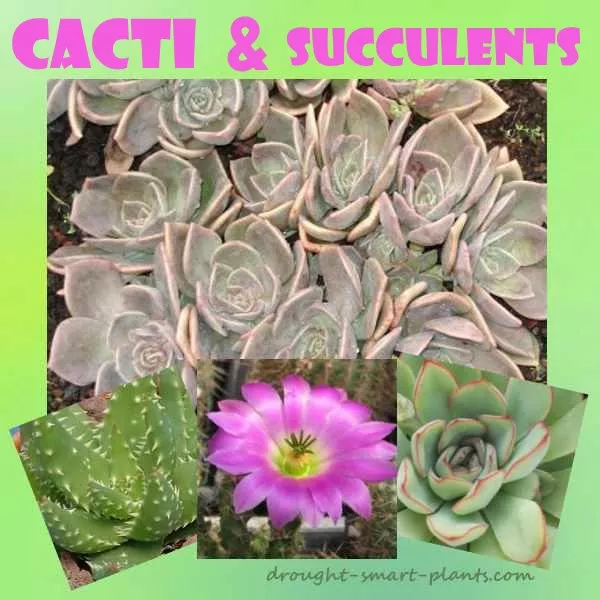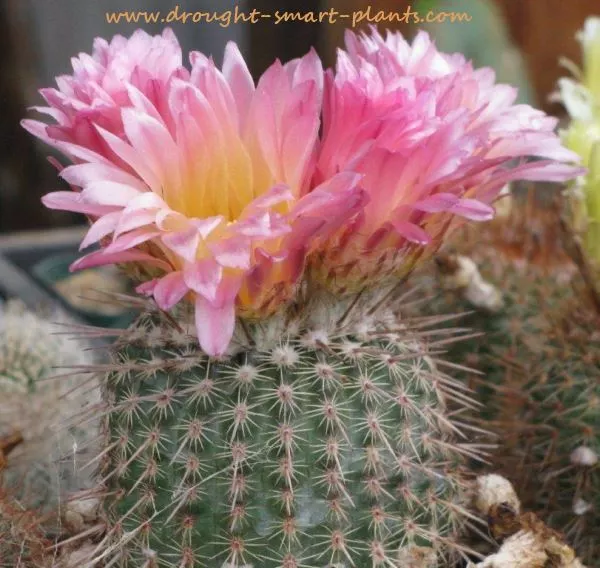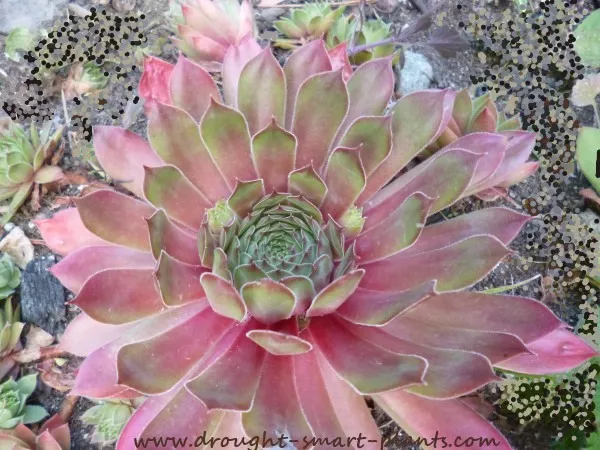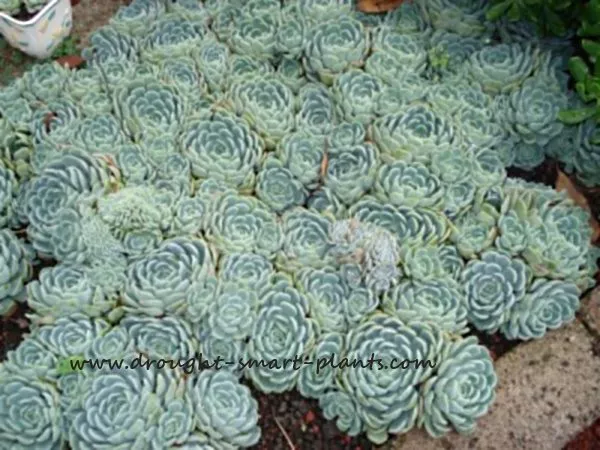Xerophytes Adapted for Drought, Modified for
Water Conservation
As an Amazon Associate I earn from qualifying purchases.
Other links on this site may lead to other companies that I’m associated with.
Cacti and succulents have some of the most highly specialized adaptations for dealing with drought conditions of any organism on earth.

Stems and leaves modified for water storage, a waxy coating, or in some cases spines or wool to create shade, and ways of going into dormancy in times of extreme stress enable these fascinating plants to survive.
Each type of plant has evolved to perfectly fit its environment – in the case of cacti and succulents, their natural habitats can be hostile places, with very dry conditions, sometimes lasting years.
The plants go dormant under times of drought, to burst forth with incredibly huge brightly coloured blooms when rains come.
Seeing the fantastic explosion of bloom is becoming a pilgrimage for many collectors, both human and insects, as this opportunity of gathering nectar and pollen for pollinators is not to be missed.

After the blooms are finished, many cacti go on to produce fruit which in an amazing number of species can be eaten. Two that come to mind are species of Opuntia, or prickly pear, and Hylocereus, known as dragon fruit.
The natural habitat of many cacti and succulents is in desert like places, leading us to refer to them as desert plants; however, there are also species that make their homes in treetops, on cliffs and screes.
See more about cactus plants here.
Epiphytes are one more type of plant that illustrates the incredible diversity and adaptations of succulents.
In many jungles, the succulents that we call Christmas cactus, more correctly called Schlumbergera, inhabit treetops to get the light they need, and are watered by rainfall, nourished by the falling leaves and twigs decomposing in the crooks of branches.
Epiphyllum, the Orchid Cactus, is known for the gorgeous blooms, best seen from below.
Dry cliffs and mountainsides are home to many hardy succulents – the Caucasus and Balkan Mountains are home to the lovely species of Sempervivum, Orostachys, Rosularia and Sedum.
Hardy and prolific, in some areas these succulents make a textural carpet. They’re valued for growing in hypertufa troughs, rock gardens, crevice gardens and planting in rock walls.
Wherever you choose to grow them, these hardy succulents are a ‘must have’ in every garden.

Tender succulents such as Echeveria species are found in this type of area in warmer climates such as Mexico. Although known as hens and chicks, this common name is also used for other hardy succulents, which leads to a lot of confusion over which ones are tough enough to survive cold, as well as drought.
All kinds of tender succulents are finding new favor with florists for using in wedding bouquets and succulent wedding favors, inspiring a new trend.

Hardy cacti are found in the cold deserts of Alberta and British Columbia, thriving in dry sandy canyons and plains, even surviving very low temperatures with blowing snow.
Cacti and succulents come in every imaginable shape, size and colour, with the impressive ability to survive cold, drought and nutrient poor environments.
These strategies make them particularly effective as houseplants, and as valuable additions to the xeric garden.
See how to make a terrarium with cactus and succulents with your kids!

